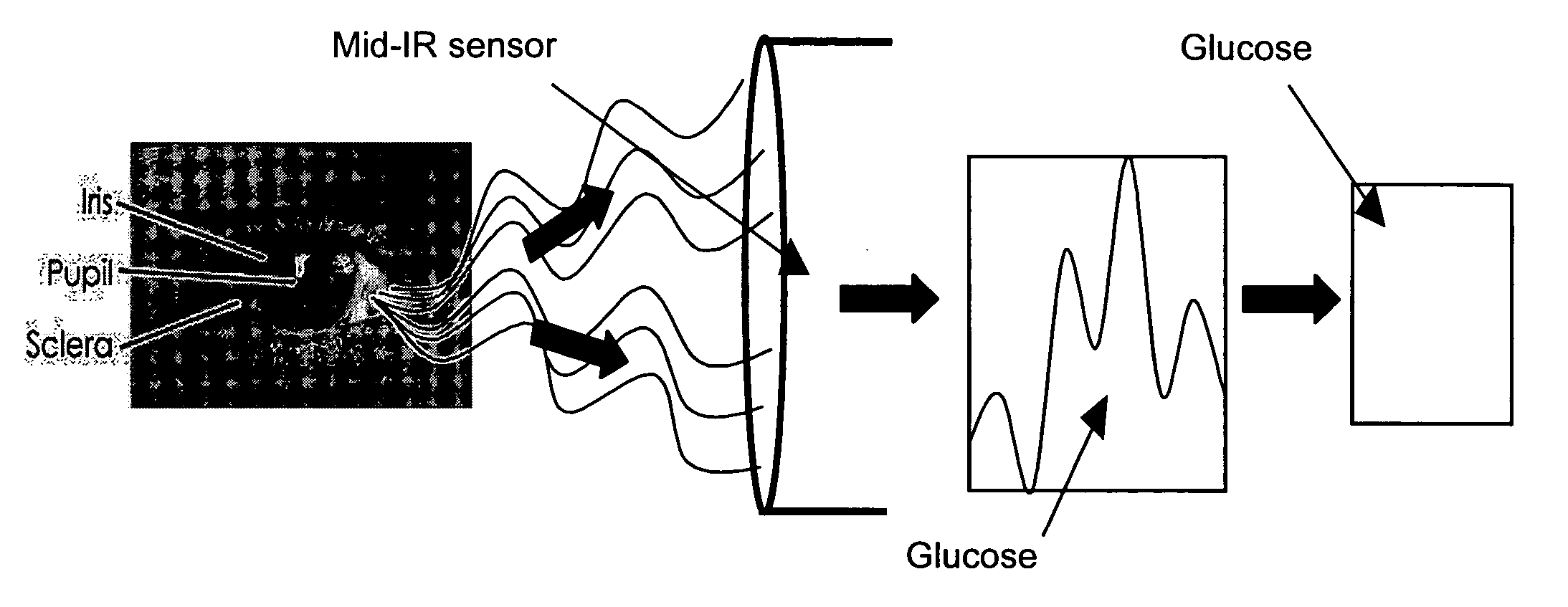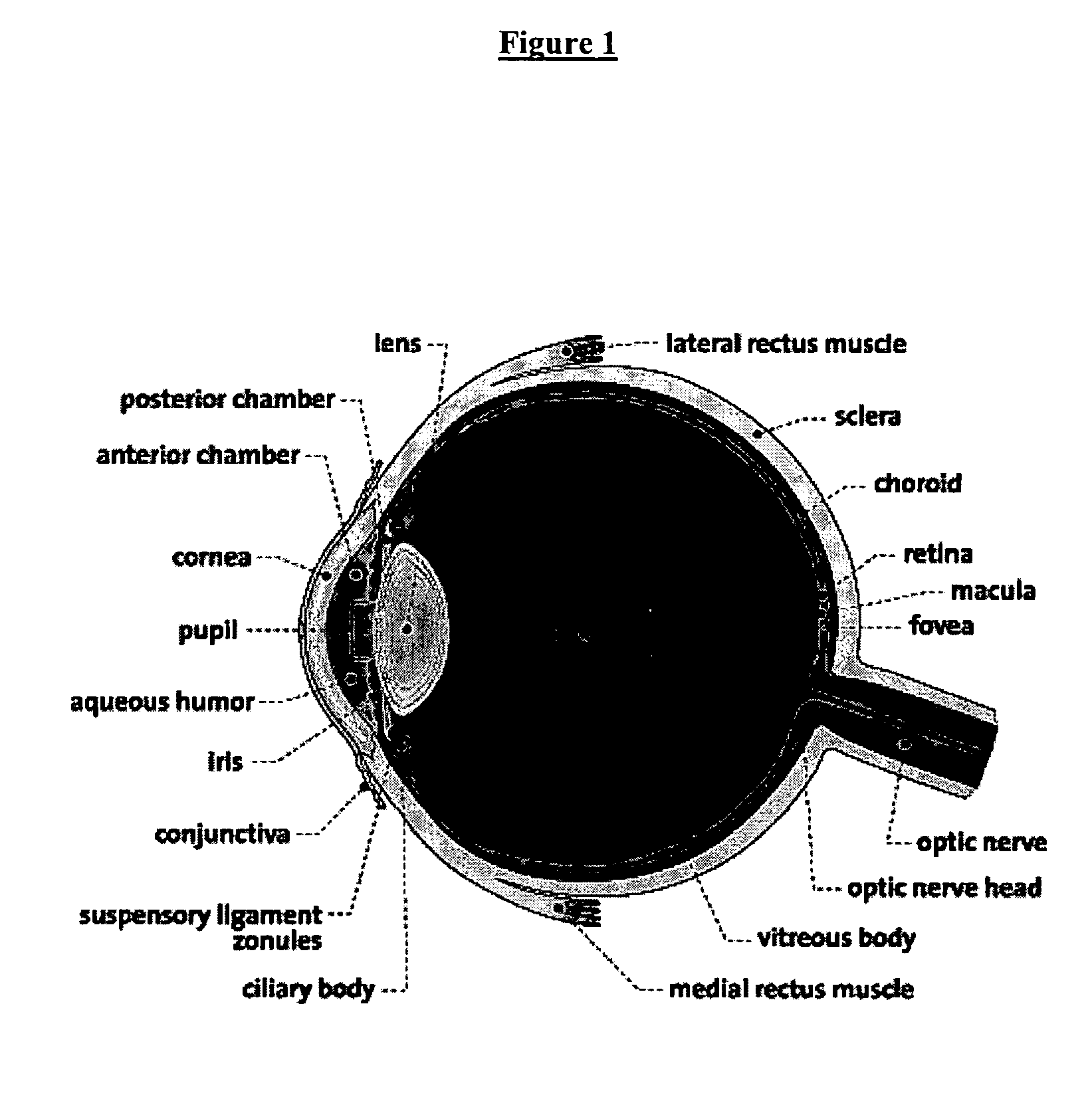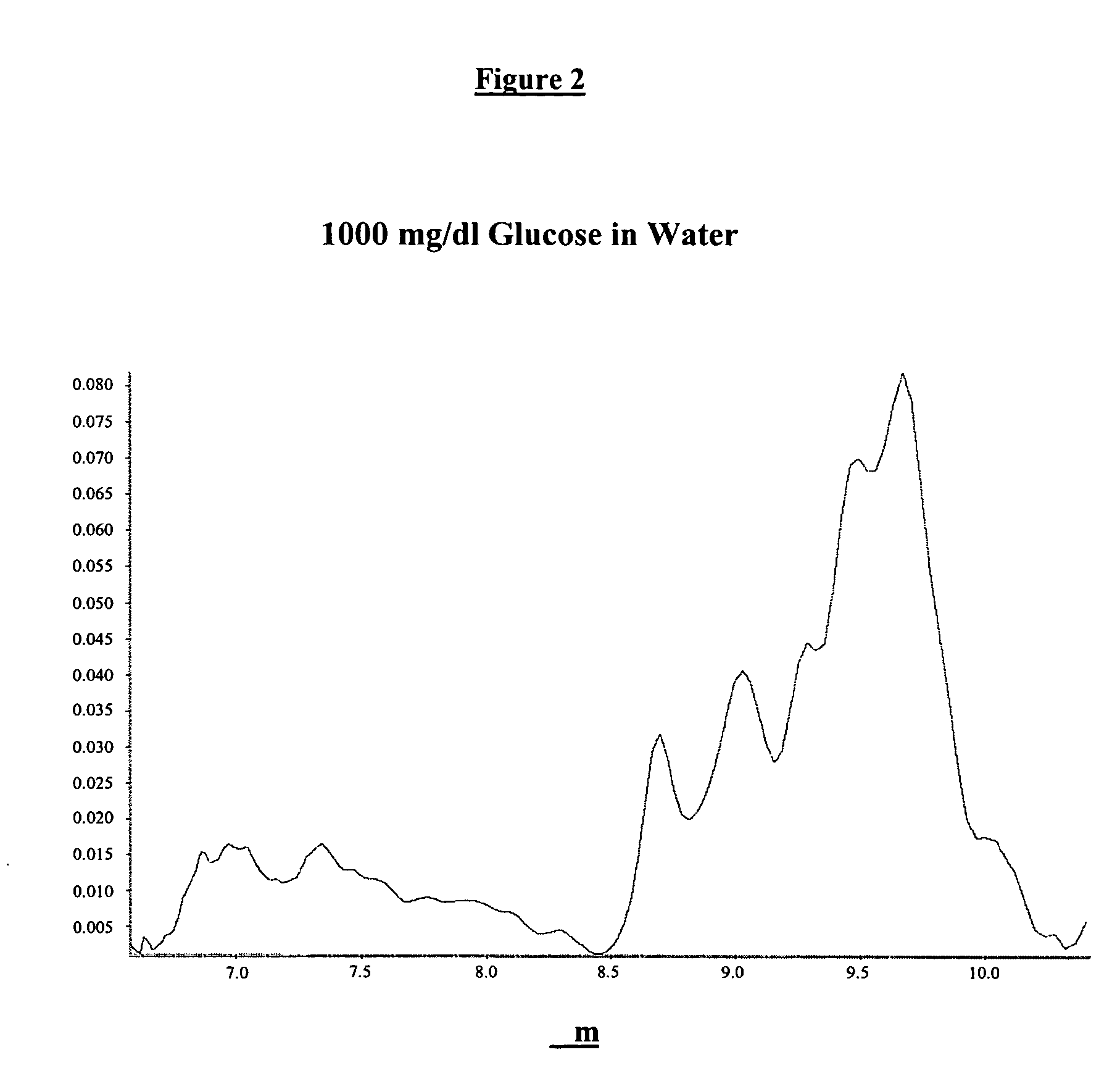Method and instruments for non-invasive analyte measurement
a non-invasive analyte and measurement method technology, applied in the field of optical non-invasive methods and instruments, can solve the problems of poor patient compliance, general reluctance to frequently perform critical measurements, and the use of near-infrared radiation, wherein the near-infrared radiation is transmitted
- Summary
- Abstract
- Description
- Claims
- Application Information
AI Technical Summary
Benefits of technology
Problems solved by technology
Method used
Image
Examples
example 1
Experimental In-Vitro Model to Test Precision and Accuracy of the Instrument
[0064]An instrument used for the Mid-infrared measurements may be the SOC 400 portable FTIR. The SOC 400 portable FTIR is based on an interferometer and was originally designed for the US Army to detect battlefield gases. This instrument may be modified to allow measurements on rabbit and human eyes. These modifications may include the installation of a filter to allow only energy in a desired wavelength region, such as between 7 to 13 micron region, to be measured, and also the modification of the faceplate to permit easier placement of the instrument for rabbit and human studies.
In Vitro Studies
[0065]Studies are performed to demonstrate that solutions with varying concentrations of glucose would give a Mid-infrared dose-response. Hydrophilic polyethylene membranes from Millipore Corporation are saturated with glucose solutions with concentrations at 2000 mg / dL and lower. The samples are warm...
example 2
Experimental Rabbit Model
[0066]An initial test is conducted using two adult rabbits having glucose values below 150 mg / dL. The rabbits are anesthetized with an IM injection of ketamine / xylazine / acepromazine according to the protocol described in Cameron, et al., 1(2) DIABETES TECH. THER., 135–143 (1999). The rabbit is immobilized such that after anesthesia the eyeball is available for measurements with the non-invasive glucose monitor as contemplated in the present invention.
[0067]Once the animals are unconscious, a drop of blood from the ear vein of each is taken and tested on a blood glucose test strip with a blood glucose meter. Such samples are taken every fifteen minutes throughout the study.
[0068]Each rabbit is placed in front of, or under, a non-invasive glucose monitor as contemplated in the present invention, or such instrument is brought up to a body surface of the rabbit, and a series of measurements are taken over the next several hours. One rabbit is tested by simply me...
example 3
Human Clinical Study
[0070]Human Studies
[0071]Several studies may be performed with non-diabetic and diabetic human volunteers. Several experiments with a diabetic volunteer may be performed. The subject is asked to adjust his food intake and insulin administration in order to have his glucose levels move from approximately 100 to 300 mg / dL over a three to four hour timeframe. During the study, the patient takes duplicate fingerstick glucose measurements every ten to fifteen minutes and is scanned with the SOC 400 approximately every fifteen minutes. Prior to collecting the infrared scan, the instrument operator aligns the SOC 400 with the subjects' eye to attempt to collect the strongest signal. Measurements of the mid-infrared radiation emitted from the subject's eye are taken and glucose concentration is measured.
PUM
 Login to View More
Login to View More Abstract
Description
Claims
Application Information
 Login to View More
Login to View More - R&D
- Intellectual Property
- Life Sciences
- Materials
- Tech Scout
- Unparalleled Data Quality
- Higher Quality Content
- 60% Fewer Hallucinations
Browse by: Latest US Patents, China's latest patents, Technical Efficacy Thesaurus, Application Domain, Technology Topic, Popular Technical Reports.
© 2025 PatSnap. All rights reserved.Legal|Privacy policy|Modern Slavery Act Transparency Statement|Sitemap|About US| Contact US: help@patsnap.com



